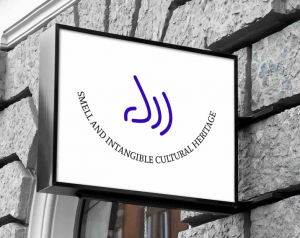The three-year project explores smell as a cultural phenomenon and the possibilities of its use in the museums in Slovenia. Smell does not exist on its own, but is always linked to olfactory habits, practices, beliefs, prejudices, and the smell socialisation. Smell is neither sociocultural nor temporally universal, but it is crucial to social relations and shapes cultural identity and moral values. Therefore, the project investigates:
- The types of olfactory cultural heritage;
- The concept of smell as it is verbalised in language, illustrating moral, racial, or social prejudices;
- The olfactory imaginary in the history of medicine, philosophy, and religion;
- The cultivation of the sense of smell;
- Smell as an expression of social prejudice, stigma, discrimination;
- The application of olfactory science in museums;
- The impact of loss of smell on quality of life.

The project is fundamental for the development of disciplines that address cultural heritage, such as anthropology, ethnology, history, archaeology, art history, museology and linguistics. Also, the project will include collaboration with other disciplines, such as chemistry, medicine, economy and computer science.
Aims of the Project
- Developing methods for identifying and tracking olfactory references in digital image and text collections from Slovenian databases;
- Developing digital tools that allow different stakeholders and audiences to freely access and interact with the project’s data and stories;
- Defining and promoting measurable standards and best practices for olfaction;
- Educating and training cultural heritage professionals in the use of olfactory heritage strategies;
- Developing heritage policy recommendations for the preservation and protection of olfactory heritage;
- Educating people about smell and quality of life and the medical history of the sense of smell;
- Developing strategies for museum olfactory didactic activities.
Partnership
The project J7-50233 is funded by ARIS (Slovenian Research and Innovation Agency) and involves:
- University of Ljubljana, Faculty of Chemistry and Chemical Technology, Heritage Science Laboratory Ljubljana (Mojca Ramšak, Matija Strlič, Abdelrazek Elnaggar, Karla Oder, Barbara Pia Jenič, Špela Pok, Fabiana Di Gianvincenzo)
- University of Maribor, Faculty of Economics and Business (Aleksandra Pisnik, Borut Milfelner, Domen Malc)
- Jožef Stefan Institute (Marko Grobelnik, Inna Novalija, Janez Brank, Dunja Mladenić)
- University Medical Centre Ljubljana (Jure Urbančič, Domen Vozel)
- Slovene Ethnographic Museum (Tjaša Zidarič, Anamarija Motnikar, Nina Dečko)
- National Museum of Slovenia (Darko Knez, Jernej Kotar, Gašper Oitzl)
You can follow the project Sicris page and Facebook page for more updates.
Publications:
1.16 Independent scientific component part or a chapter in a monograph: RAMŠAK, Mojca. The intangible and transient heritage of odours : an anthropological consideration. V: MCBRIDE, Nuri (ur.), WILSON-BROWN, Saskia (ur.). Alabastron : aromatic history and culture. Los Angeles: Institute for Art and Olfaction Editions, 2024. Str. 36-52, ilustr. Alabastron, vol. 1. ISBN 979-8-218-36348-2. [COBISS.SI-ID 199449091]
2.01 Scientific monograph: RAMŠAK, Mojca (author, resume translator). Antropologija vonja. Ljubljana: Alma Mater Europaea – Fakulteta za humanistični študij, Institutum Studiorum Humanitatis, 2024. 372 str., ilustr. ISBN 978-961-6192-90-3. dCOBISS. [COBISS.SI-ID 188845571]
